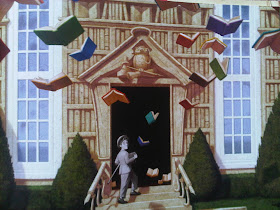Your correspondent remembers a time when Halloween was a holiday primarily celebrated by children. As I dimly recall that era, we kids purchased some great, inexpensive costumes, or, better yet, made our own. We would trick-or-treat after school and then, if we were especially lucky, television would make the day perfect with a vintage monster movie, preferably something starring Bela Lugosi (1882-1956) or Boris Karloff (1887-1969).
Things have changed quite a bit.
Today, one would be hard pressed to find children celebrating the holiday at all. Misguided, unimaginative parents fear something “unwholesome” about Halloween, and church leaders and other professional blue noses prate piffle about “satanic influences.” As if wearing a Capt. America costume before eating a pound of licorice was the fast road to perdition...
But worse than disenfranchising children from the holiday, adults have coopted it as their own, making what was once a childish frolic of skeletons and ghost stories into a sort of demented Mardi Gras. As if the Baby Boomer generation was not sufficiently infantilized, it continues to make matters worse by taking the very stuff of childhood and perverting it into an extended flight from adulthood. If your children are home while you are in a Halloween party … then something is seriously wrong.
Not that adulthood means leaving behind the fun of Halloween completely. Many of the great classics of English literature are ghost stories (Hamlet, anyone?), and the shudder tales of M. R. James and Sir Arthur Conan Doyle remain champion reading. And if, like your correspondent, you have an interest in the children’s literature of the past century, you could do much worse than finding a copy of The Pearl and the Pumpkin by Paul West and W. W. Denslow.
Denslow (1856-1915) is, of course, remembered primarily as the first illustrator of L. Frank Baum’s The Wonderful Wizard of Oz, in 1900. Denslow was considered to be one of the major contributors to the success of the book, as his illustrations were applauded by critics and children alike. Baum and Denslow would work on several other books, including Father Goose: His Book, and Dot and Trot of Merryland; jointly holding the copyrights of their collaborations.
However, things went sour when the Wizard of Oz was adapted for the stage. Baum wrote the show and Denslow designed the sets and costumes – but the two would quarrel when Denslow insisted on 50 percent ownership of the show. It would be the last time the two worked together – though Denslow earned so much from the book and the show that he was able to buy an island off of Bermuda and crown himself King Denslow I.
Baum would, of course, go on to write 13 more Oz books, and dozens of other classic children’s tales. Illustrating the Oz stories fell to John R. Neill (1877-1943) who, to this viewer’s eye, surpassed Denslow’s conception to become the finest illustrator of the Oz corpus.
Immediately following the windfall of the Oz book and stage play, Denslow sought to duplicate its success. He worked with writer Paul West to create The Pearl and the Pumpkin in 1904. (It would go on to become a successful show in 1905, running in Boston and New York before touring the country.)
For sheer audacious invention, it would be hard to beat The Pearl and the Pumpkin. The story begins on a farm in Vermont, where Joe Miller has perfected a method for growing perfect pumpkins. He and his cousin, Pearl, are all set to celebrate Halloween when they are visited by the Ancient Mariner (complete with albatross and crossbow), who contrives to learn the secret of perfect pumpkins because the pirates down in Davy Jones’ Locker (including Long John Silver, Balckbeard, and Capt. Kidd) are hungry for pumpkin pie.
Before too long, Joe is turned into a giant pumpkin boy by a sprite called the Corn Dodger, and they (along with a baker and professional canner) all end up under the sea, battling pirates and contriving to get Joe back to normal.
The book was clearly designed with a stage extravaganza in mind (the Glinda-like figure, Mother Carey, even has a bevy of chorus girls behind her), but the joyous energy, high spirits and bright good humor make the book a unique experience. Denslow created illustrations for every page – including some spreads that straddled both open pages. Fortunately, the book was available in a facsimile of its 1904 edition from Dover Books, and can be found in places like New York’s Books of Wonder.
I could think of no better way to celebrate Halloween.









.jpg)






